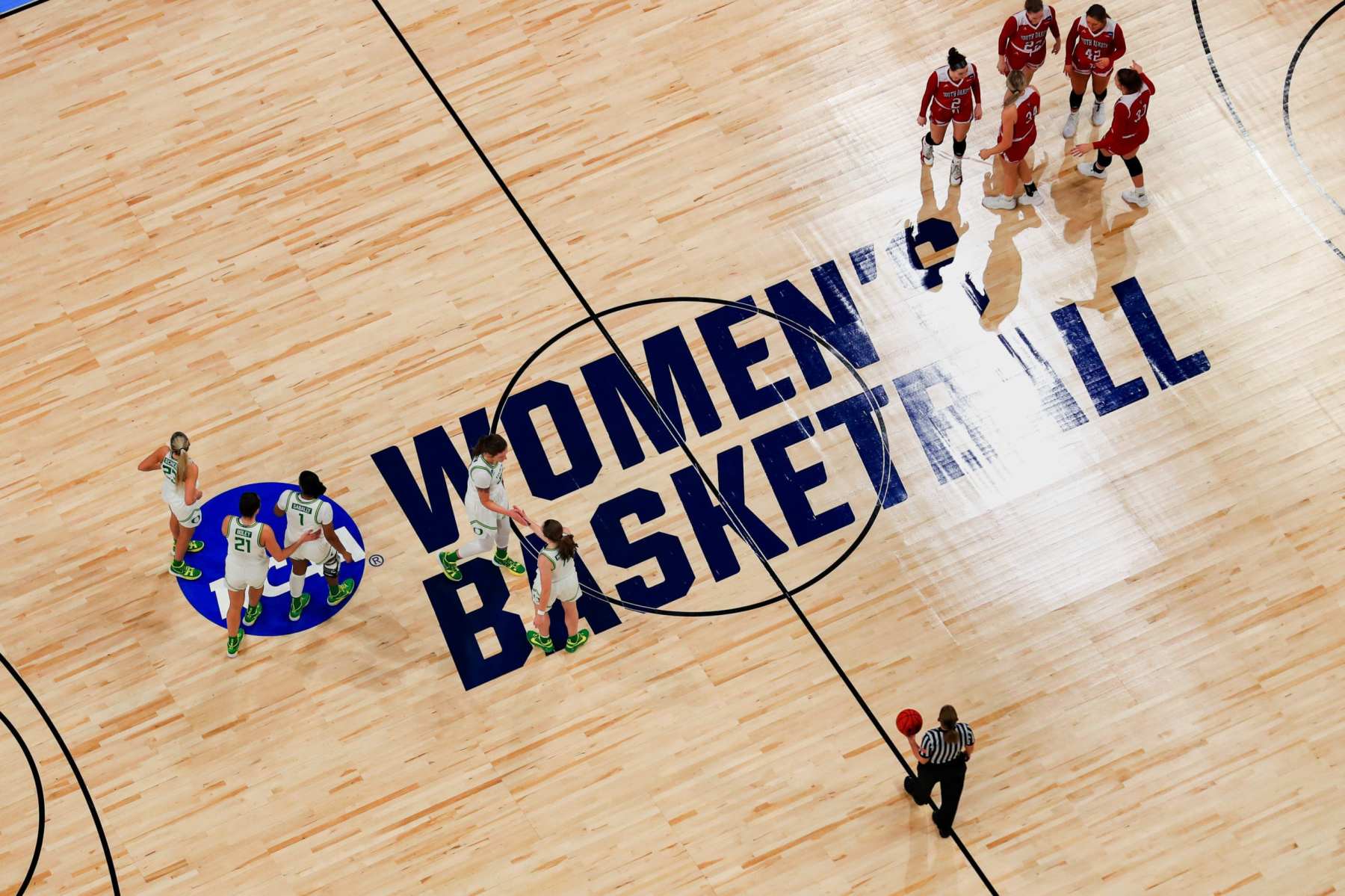On Tuesday, National Collegiate Athletic Association President Mark Emmert agreed to an independent review after coaches and athletes documented the clear disparities between the men’s and women’s NCAA basketball tournaments. In a letter, Emmert vowed to ensure that “all students-athletes are equally supported” at its events. The letter came in response to outrage from players, coaches, fans, and even the association’s committee on women’s athletics.
Days before the first game in the biggest tournament in women’s college basketball, Ali Kershner, a sports performance coach for Stanford University, posted a photo on social media comparing the men and women’s training equipment provided by the NCAA.
The photo showcased a single dumbbell rack and a stack of yoga mats provided to the women in San Antonio next to the state-of-the-art weight facility in Indiana for the men.
“These women want and deserve to be given the same opportunities,” Kershner wrote. “In a year defined by a fight for equality this is a chance to have a conversation and get better.”
Sedona Prince, a University of Oregon player, also posted a video on social media that highlighted the disparities. “We are still fighting for bits and pieces of equality,” she wrote. The video has been viewed millions of times.
More examples of how women players were valued less than their male counterparts began circulating online. Images of the athletes’ swag bags showed that the men had been given many custom-designed memorabilia, while the women received a few generic items, including a 150-piece puzzle. Photos of the men’s large buffets circulated alongside small pre-packaged meals. Geno Auriemma, head coach of the Connecticut women’s team, told reporters on Friday that his team was receiving a different, less accurate daily coronavirus test than the men’s teams.
The NCAA doesn’t even use the trademark “March Madness” to promote the women’s tournament, though the trademark registration allows its use for both the men and women. The courts used during women’s games simply read, “NCAA Women’s Basketball.”
In the letter, Emmert said he was disappointed and vowed to review what happened in San Antonio to “ensure this does not happen again.” He noted that some of the issues were “immediately rectified” for players in San Antonio. Prince posted a video on Saturday showcasing a new weight room with more racks of dumbbells, bands and equipment.
“But these immediate fixes are not enough,” Emmert said in Tuesday’s letter. “We must address the long standing issues around gender equity to make certain that we do not see these disparities in the future and can uphold our values of inclusion and equity in the most tangible ways.”
More and more people are watching women’s basketball. The 2019 women’s Final Four in Tampa set attendance records in an arena of 21,000. More than 3 million TV viewers watched Baylor play Notre Dame in the championship that year, with ratings were up 24 percent from 2016. This year, ESPN decided to show all 63 women’s games.
The men’s tournament is more lucrative for the NCAA, with a nearly $20 billion TV deal and millions more viewers, but “that still doesn’t explain why a men’s team that wins a single game will get a payout of $2 million while a women’s team that wins an entire championship tournament will not get a cent,” columnist Sally Jenkins wrote in the Washington Post.
The NCAA, a nonprofit organization, provides no payouts to women.
Title IX, the federal civil rights law that prohibits discrimination on the basis of sex in education, typically protects student athletes, ensuring women and men are given equal opportunities. However, the law does not apply to the NCAA because it is funded through dues paid by colleges and universities, as opposed to federal funds.
Muffet McGraw, the former head women’s basketball coach at Notre Dame, released a statement saying that she appreciated the outrage, but underscored that this fight against gender inequity in sports has been going on for years.
“The NCAA had an opportunity to highlight how sport can be a place where we don’t just talk about equality, we put it on display,” McGraw said. “This is the issue that women have been battling for decades … We have taken the crumbs from the table we don’t even have a seat at, and we didn’t complain.”
The first NCAA women’s championship was held in 1982, one of a dozen women’s sports added to the association’s championship program that academic year. Back then, women basketball players crammed into cars to get to games and sometimes — to save cash — slept on the floor of the gym that they would play on the next day. While more and more women are playing college sports in recent years, the number of women head coaches has declined for decades, according to a 37-year study produced by researchers Linda Carpenter and R. Vivian Acosta.
“Well time’s up, gentlemen,” McGraw said in her statement. “This generation of women expects more and we won’t stop until we get it.”






